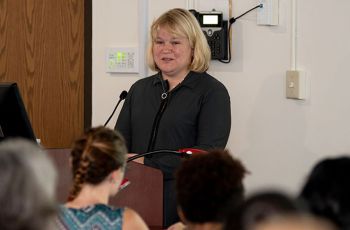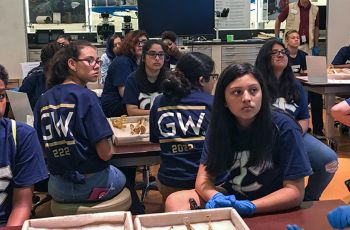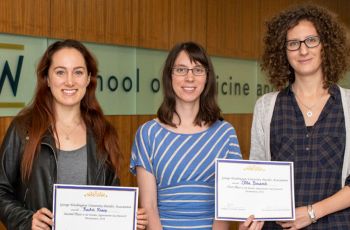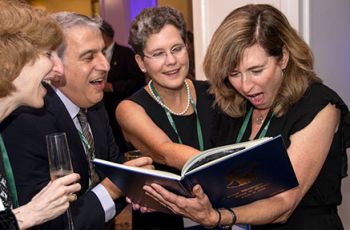Featured News
Kristiina Parviainen-Yang, MD, RESD '99, discussed thyroid disease during pregnancy at the 10th Annual Allan B. Weingold Lecture
SMHS received a grant from the Health Resources and Services Administration to develop an educational pipeline program.
Diversity often is defined as increasing representation of people from all backgrounds in a particular field, but it’s also more than varying the makeup of an organization, it’s supporting diversity of thought, says Keith Melancon.
The GW Postdoc Association hosted Postdoc Appreciation Day on Sept. 21 as part of the National Postdoc Association Postdoc Appreciation Week from Sept. 17–21.
Just days after George Washington University (GW) School of Medicine and Health Sciences (SMHS) students gathered to express concerns about gun violence and patient safety, two more shootings occurred: One in Wisconsin and one in Pennsylvania.
After receiving scholarship support from GW, Dr. Essel’s giving back through his work in the Anacostia neighborhood of Washington, D.C. and investing in students who will become physicians helping others.
The threat of Hurricane Florence loomed over the George Washington (GW) University School of Medicine and Health Sciences (SMHS) Reunion Weekend, but the clouds and spots of rain didn’t dampen the spirits of those attending the annual event.
First-year MD, PT, and PA students volunteered with the Special Olympics Young Athletes program for Community Service Day.
In mid-September, the George Washington University (GW) School of Medicine and Health Sciences (SMHS) started a tradition: the Stuart S. Kassan, MD ’72, Lecture Series.
There is more to the elements of style than whether you can get away with wearing white after Labor Day. In terms of branding, marketing, and writing, style equals grammar and punctuation plus accuracy and consistency.









